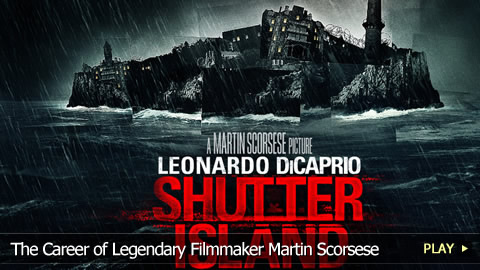The Career of Legendary Filmmaker Martin Scorsese

advertisement
VOICE OVER: WatchMojo.com
He is widely considered to be one of the most significant and influential filmmakers of his era. Throughout his career he has incorporated the themes of Italian American Identity, Roman Catholic concepts of guilt, and gritty violence in his films. He has also become known for his long-running collaborative bonds with his friends and actors. These include his high-profile pairing with Harvey Keitel, Robert De Niro and Leonardo DiCaprio. Join us at http://www.WatchMojo.com as we take a look at the highly acclaimed career of director Martin Scorsese, and his life-long struggle to claim his Academy Award.
Martin Scorsese Profile
He’s an Oscar Award winning director that has become famous for his long-running collaborations with actors, as well as his focus on Italian-American subject matter. Welcome to Watchmojo.com and today we’re taking a look at the critically acclaimed career of Martin Scorsese.
Martin Scorsese was born on November 17, 1942 in Queens, New York. In his youth he attended a catholic high school in the Bronx, and sought to one day join the priesthood. However, numerous visits to the local movie theatre stirred an even greater passion for cinema, which led him to study at NYU. There he obtained a Master’s degree in film directing.
Scorsese began creating full-length films with, 1968’s “Who’s That Knocking at my Door”. The feature not only began his career, but also set the stage for several long-running collaborative bonds, beginning with his former classmate Harvey Keitel.
In 1972, Scorsese directed the depression-era picture “Boxcar Bertha” for Roger Corman, an experience taught Scorsese the principles of B-Movie filmmaking. As a result, Scorsese learned that enjoyable movies could be made on a tight budget and production schedule.
Fortunately, this training experience prepared Scorsese for the rough filming conditions of 1973’s “Mean Streets”, a film that truly established Scorsese’s signature style of rapid editing. It also began yet another fruitful partnership, this time with actor Robert De Niro. The duo then went on to release their iconic film “Taxi Driver”. The Movie became a wild success for the pair, and firmly established Scorsese’s reputation as a filmmaker by winning him four Oscar nominations and the Palme D’Or award at the 1976 Cannes film Festival.
Due to his newfound fame and reputation, Scorsese found himself in a position to take on his first big-budget project. Interestingly, he chose to create a musical tribute to his hometown. Unfortunately, “New York, New York”, turned into a devastating box office failure, and drove Scorsese into a long period of depression and cocaine use.
In the following years Scorsese dabbled in documentary filmmaking with projects like “The Last Waltz”, however his creative energy finally rebounded with the making of 1980’s “Raging Bull”. The picture ultimately became one of the greatest sports movies of all time due to Robert De Niro’s involvement both on and off the camera, as the actor helped Scorsese kick his cocaine addiction. Despite Raging Bull’s success, one of Scorsese’s biggest failures arrived in the form of his next project, “The King of Comedy”.
The desperate need for a commercial success then prompted Scorsese to take on his first mainstream project, “The Color of Money” starring Paul Newman. This box-office draw enabled Scorsese to find financial backing for his deeply personal religious project, “The Last Temptation of Christ”. However, to his horror the film spurred violent backlash and was banned in several countries.
With mixed results behind him, Scorsese entered the 90’s with newfound focus that enabled him to put together a string of high-profile successes, such as his gangster epic "Goodfellas”, and 1995’s “Casino”. These films have come to be considered some of the greatest achievements of his career, and both benefited from being the products of emotionally detached filmmaking.
Yet, despite each success Scorsese had also taken on more questionable projects, such as 1997’s “Kundun”, which confused and alienated many of his fans.
Still, as the millennium came to an end, Scorsese crafted his biggest and most mainstream venture to date. “Gangs of New York”, not only got nominated for numerous awards, but marked his first collaboration with actor Leonardo DiCaprio, who would also star in his critically acclaimed biopic “The Aviator” in 2004.
In 2007, “The Departed” finally granted Scorsese his first Academy award for Best Director, which was presented by his longtime friends and colleagues Francis Ford Coppola, Steven Speilberg and George Lucas. Scorsese attributed the film’s success to the perception that it was his first project with a recognizable plot.
In 2010, Scorsese reunited with DiCaprio for the fourth time for the film adaptation of the novel-inspired thriller “Shutter Island”, and was announced as the director for the upcoming and highly anticipated biopic centered on the life of Frank Sinatra.


94ejack
“Happy birthday, Martin.”
 1
1
 0
0
 report
report
